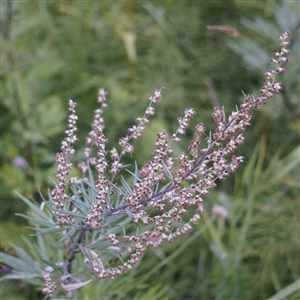Mugwort (Artemisia vulgaris)
Main Facts about Mugwort

Mugwort is a multi-stemmed 4-6-foot perennial that spreads via rhizomes. It has deeply divided leaves that are dark green above and grayish white below. It can reach heights of 6 feet, and has yellow or reddish-brown flowers in the summer. Mugwort flowers from midsummer to late summer.
Parts used – leaves and buds.
The origin of its name is unclear, but some think it comes from Mugwort’s use as a flavoring for drinks, including beer, since early times.
Found throughout most of Europe, Asia, and North America, Mugwortl was believed to offer protection from evil spirits, wild animals, sunstroke, and fatigue. Roman soldiers put Mugwort in their sandals for endurance before marching. People placed it under their pillows to induce vivid dreams, and planted it around their houses and gardens to repel moths.
It is a very important herb in the traditional Chinese medicine practice of moxibustion, during which heat from the burning dried leaves is applied to acupuncture points on the body.
Ayurvedic practitioners used Mugwort to treat heart problems and general malaise.
Mugwort was also planted in gardens to repel insects and was used to protect clothing from moths.
Using Mugwort
Mugwort is used as a digestive stimulant, for indigestion and intestinal worms. It is also used to treat menstrual problems and anxiety, as a nerve tonic. Mugwort is a uterine stimulant that can bring on late period.
Mugwort is often mixed with other herbs to create dream pillow.
The diluted tea can be used as a garden insecticide; be sure to test it on a small area before spraying the entire plant.
Mugwort is a remedy for: Anxiety
Cooking with Mugwort
In Europe, Mugwort was used as a beer flavoring before hops were cultivated.
Dried leaves are used as a flavoring for fish and meats, including the traditional German Christmas goose. In Korea, the herb is used in rice cakes, teas, soups, and pancakes.
How to grow Mugwort
Mugwort, sometimes considered a weed, is very easy to grow. Most species prefer full sun, good drainage and almost neutral soil, although Mugwort tolerates partial shade. The plant can grow very large (to 6 feet), so a location that provides support, such as near a wall or fence, is best. As it is strongly insecticidal, use it as a companion plant in the edge of gardens.
Harvest leaves and buds before the flowers open. Propagate by root division in early spring or fall or from seeds. Lightly trim and shape in spring.
Keep in mind that Mugwort pollen is one of the main sources of hay fever and allergic asthma in North Europe, North America and parts of Asia.
| Motherwort |
Mullein
|